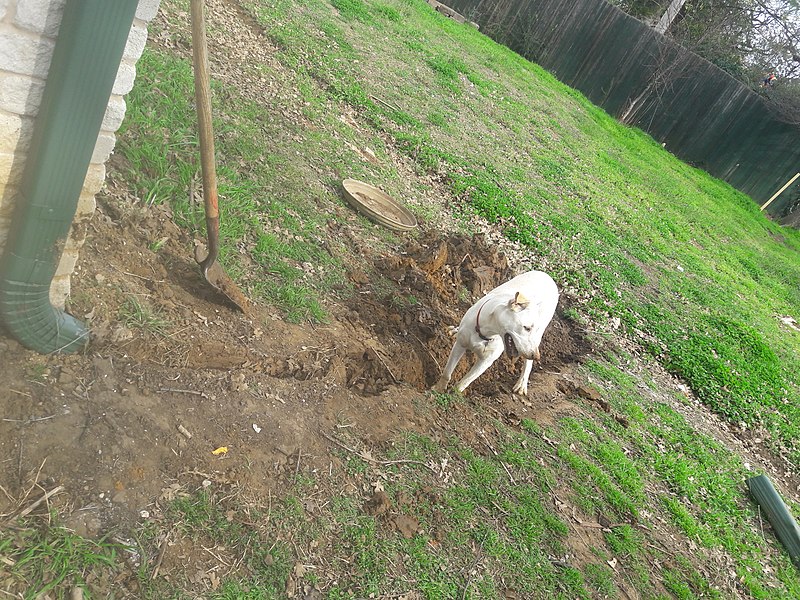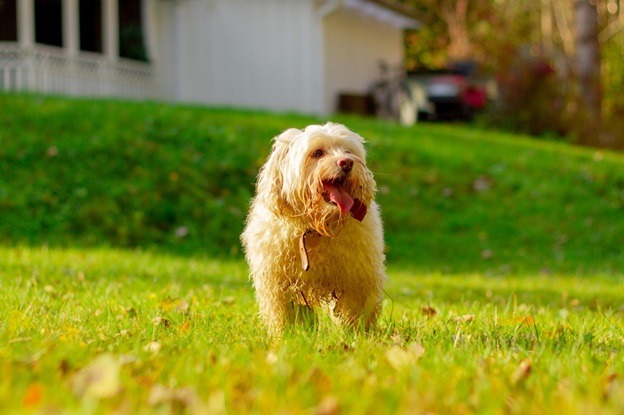“How to keep dogs from digging under the fence” is one of the most searched queries in most pet owners’ communities. While our canine family members may have a different opinion from us, a dog that won’t stop digging around can be quite a nuisance.
There are a lot of possible solutions for this issue online. Some, such as the electric dog fence, are tested and tried to work, while others don’t work for some dogs.
For this post, we’ll dig deeper into why dogs dig. We’ve also included tech-based and non-tech dog training tips that might help solve this problem.
Dog Digging Under Fence
To develop an effective dog digging deterrent, you first need to dig to the root of the problem. Why do dogs dig?
Digging is quite common in dogs. While it may appear as they do it to defy you, your dog certainly has several valid reasons that motivate them to display their epic natural digging abilities.
These are the main reasons why dogs dig holes in the backyard and under the fence;
1. Dogs are domesticated wolves!
Dogs and wolves are undeniably different physically. But thanks to DNA, it’s evident that wolves and dogs are 99.99% the same species. Not surprisingly, most known behaviors of wolves, such as digging, greeting, aggression or friendliness, and body language, are also seen in dogs.
2. Some were bred to hunt
While digging is just a part of being a dog, some breeds, for instance, terriers and dachshunds were initially bred to hunt, fight, and kill vermin and foxes. These dogs are commonly known as earth dogs or quarry dogs, thanks to their impeccable abilities to dig and flush out pests in underground dens. They do this using any dynamic behavior possible, including barking, staring, pawing, and even digging. Even if you don’t have a rodent problem around your yard, the digging instinct is still influential in most of these dogs and maybe flaunted anytime.
3. To relieve anxiety
Anxiety affects dogs from time to time, just like us human beings. Dog anxiety affects all breeds, and while unpleasant, it’s a natural response to stress caused by;
- Separation
- Aging
- Fear
Separation anxiety is thought to affect approximately 14% of dogs. Although it’s yet unclear why dogs experience it, experts say that dogs get upset or agitated when separated from family members to which they are dearly attached.
Common symptoms of separation anxiety in dogs include distress behaviors, such as digging, barking, howling, and destroying household objects.
4. To keep away doggy boredom
Dogs are intelligent and social animals. However, their smartness also means that they can quickly get bored if they can’t get enough attention from you and if their toys aren’t satisfying.
Unfortunately, energetic dogs and pups don’t always switch off when they are bored. Instead, they’ll find something to keep their paws busy and spend pent-up energy even if that ‘thing’ doesn’t please you. If you always come back to the issue holes in your fence or the yard – a definite answer your dog is bored. Other signs of a bored dog include excessive barking and chewing.
Electric Dog Fence Plus Visible Fence
Now you know why your dog is digging under the fence, here’s how the K9 electric fence may come to the rescue. An electric fence for dog works makes it an effective traditional fence reinforcement when dealing with diggy dogs.
There are two electric dog fence layouts when reinforcing a traditional fence;
Single loop
This design involves laying the wire in a single loop along the fence. This design applies when installing the electric fence around the property parallel to the existing, visible fence. You can choose to bury the wire or run it on the fence a few inches from the ground.
Double loo
If your existing fence goes at the front or back yard only, the double loop electric dog fence design will be the most ideal for you. This method involves running the first wire underground from one side of the fence to the other. Next, you run the wire at the top of the fence back to the transmitter. Importantly, ensure that the two wires are at least 4 inches apart to avoid canceling the signal.
Proper Training
Understanding how to train a dog with an electric fence is just as important as installing the most effective containment system. The idea behind an electric pet fence is to offer both of you freedom while ensuring the dog’s safety. It should not create a stressful or traumatizing environment.
After installing the electric fence, commit to walking with the dog alongside the flags three times daily, 15 minutes per session for two weeks.
Step 1: Training the dog to obey the alert tone
Start by setting the collar to beep only by turning off the correction. With the dog on the leash, walk with the dog toward the fence. When you hear the warning tone, guide the dog back and reward. The idea here is to train them to obey the beeping sound.
Step 2: Learning the consequences of ignoring the warning tone
The next step involves introducing a mild correction. Walk with the dog along the boundaries of the invisible fence. If they receive a correction, guide them into the yard and offer them a treat. The correction serves as a cue that ignoring the alert tone leads to uncomfortable consequences.
Step 3: Introducing temptations
Once your dog starts learning the rules of the fence, it’s time to introduce some of its favorite temptations. With the dog still on the leash, introduce a toy or favorite teammate as they explore the boundary. Guide them to the yard and reward them with treats or praises if they get a correction.
Step 4: Off-leash training
As your dogs start complying consistently, it’s time to start off-leash training. Start by having short supervised sessions together and gradually let your dog roam in the yard unsupervised for extended periods.
Step 5: Removing the flags
In a few months, you should have your dogs safely trained to stay in the yard. Your dogs will have marked the boundary by now, making it safe to remove the flags. Start by removing every second flag in the first week. Repeat the same in the following weeks until you’ve removed all the flags.
Little Things that Help
Here are more tips to stop your dogs from digging holes along the fence and in your yard;
- Give your dog some things to do.
- Create a particular digging spot.
- Use deterrent sprays.
- Provide a cozy place for your dog.
- Interact with your dog.
- Block their view through the fence by covering the panels.






